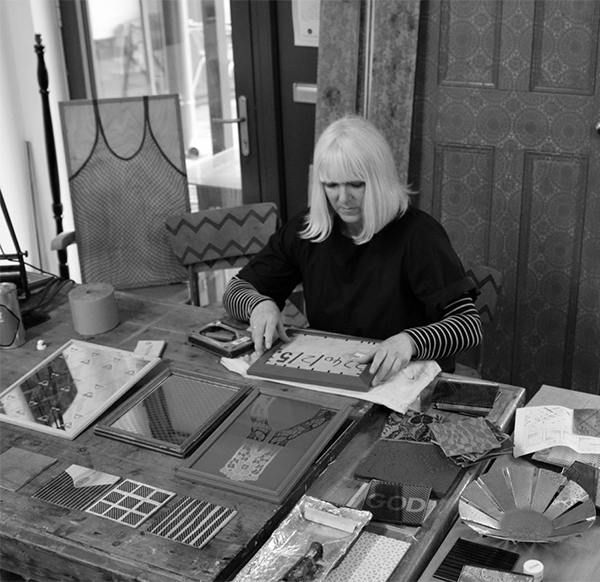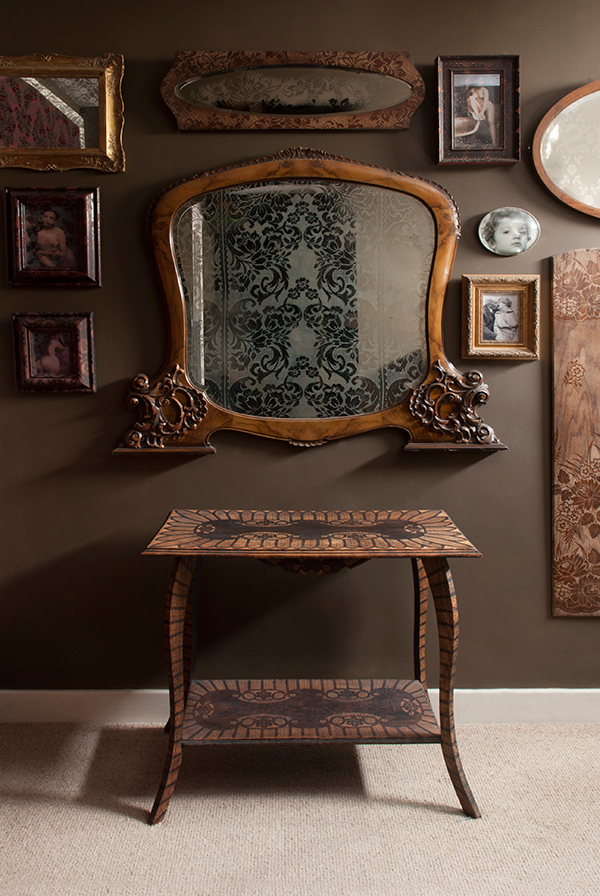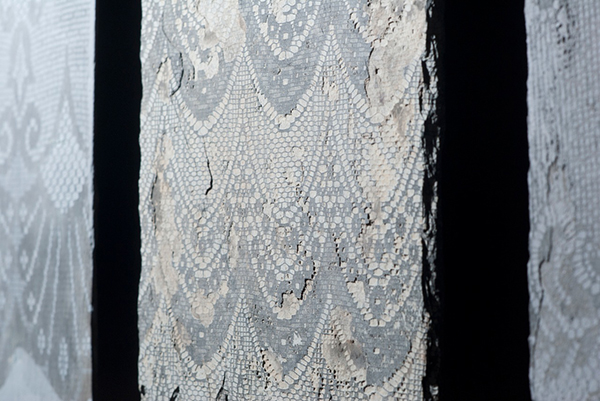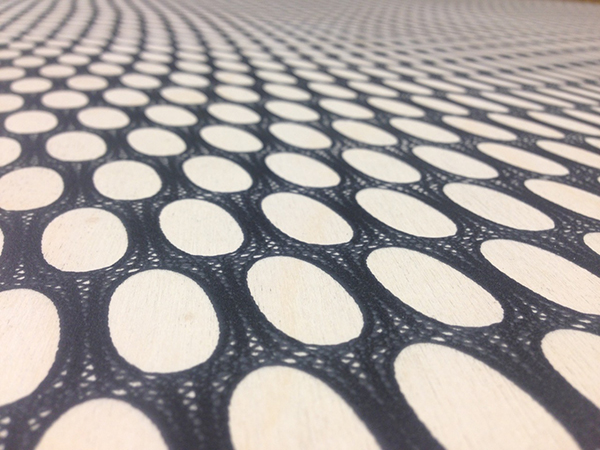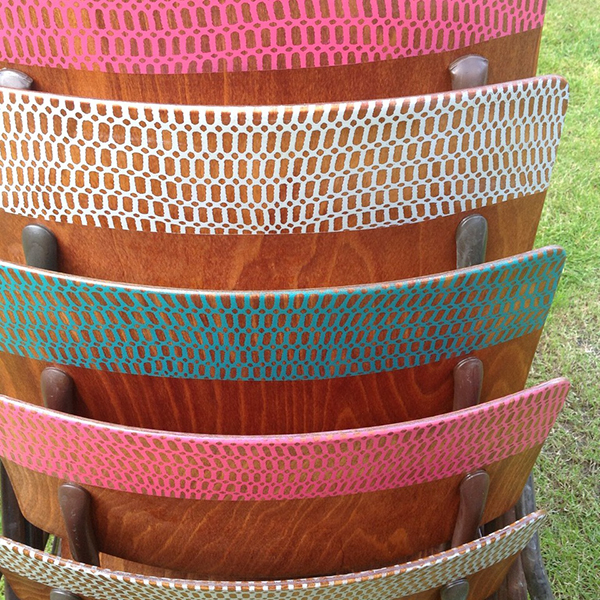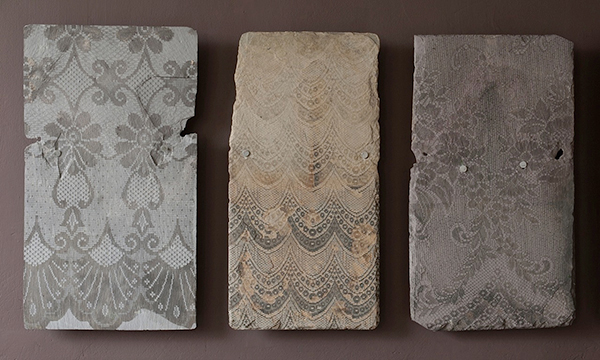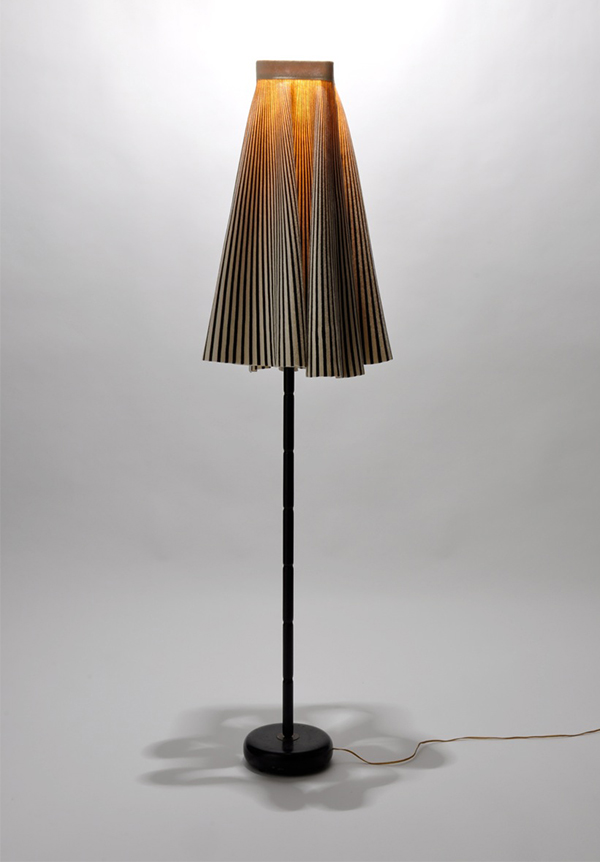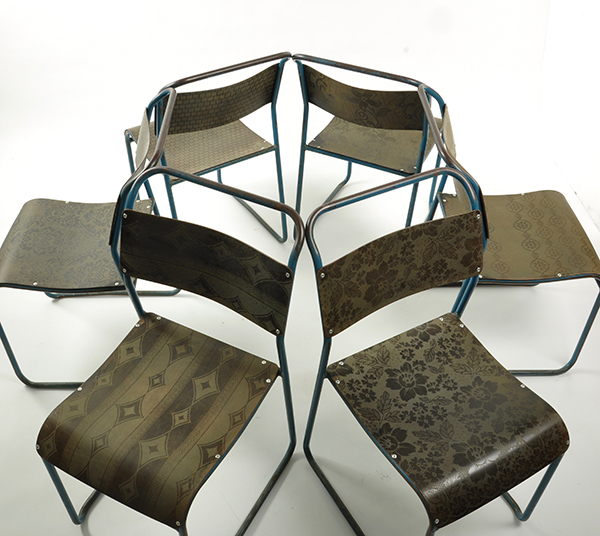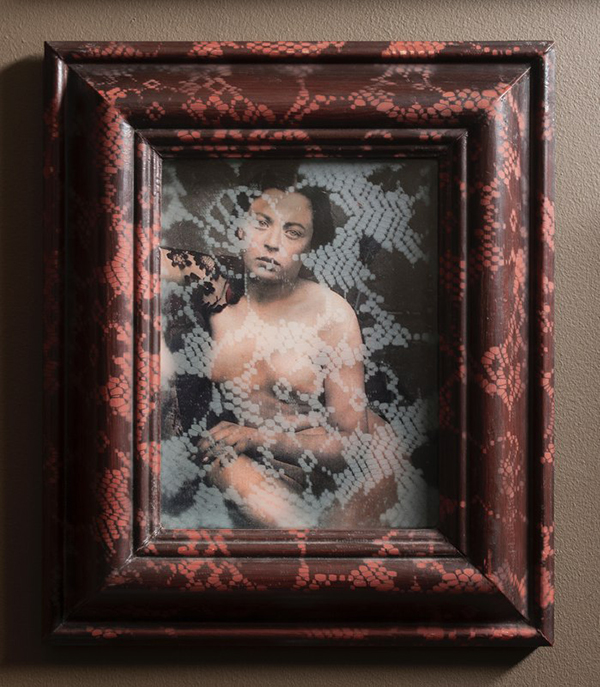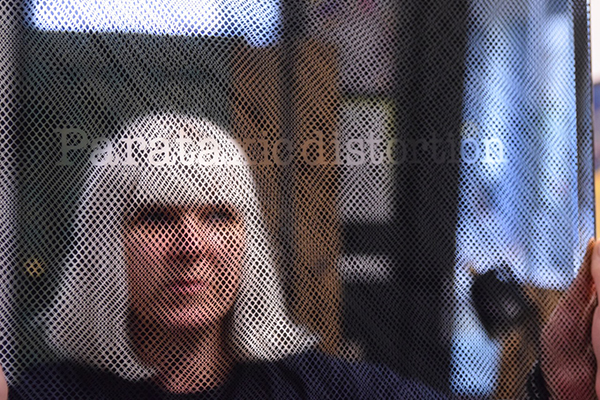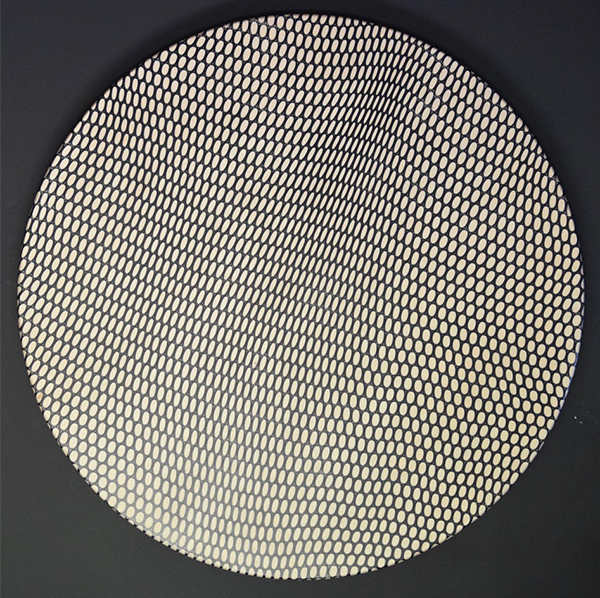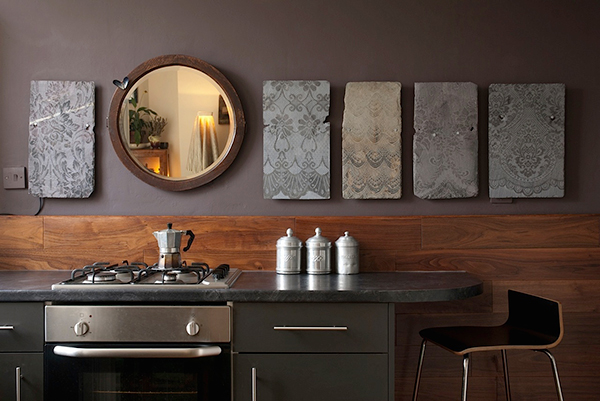Born and raised in Battersea, Jo Gibbs is a London-based artist who started off her creative career in textiles. It all began with her first Saturday job at Tooting market. Jo worked on a fabric stall with a lady called Lybette who took her around all the wholesalers in Brick Lane.
Fast forward to 1992, Jo moved to Como, Italy where she worked as a textile designer and trends forecaster. Collaborating with Italian textile archivists, stylists and design studios gave her an insight into how the textile industry worked. She then began designing herself and decided to set up her own studio.
Jo’s recent body of work however falls somewhere between art and design. Most of her pieces are characterised by a term she has coined ‘netching’. She invented the technique whilst studying for her MA in Textiles at Chelsea College of Art. The process involves using a piece of net or mesh to create pattern on all kinds of surfaces, creating a print from the spaces in between.
After passing her masters degree with distinction, Jo’s work was bought by Keith Johnson, for the Anthropologie gallery at New York’s Rockerfeller Centre. As well as exhibiting with Designersblock at London Design Festival and Salone del Mobile in Milan, Jo was donned one of Kevin McCloud’s ‘Green Heroes’ and had her work featured in Vogue.
Working from her studio in Stockwell, South London. Jo creates bespoke works for architects and interior designers, as well as private clients. We found out more about Jo’s journey from textiles to upcycling and the connection between the two.
1) When did you first discover your creative niche?
Even as a child, I was playing with materials and repurposing items for my toys. I remember being very impressed with Tatum O’ Neal in the film Paper Moon, when she disguises money on her hat with chocolate buttons.
The Italians are amazing at precision and beautiful, classically styled textiles that are impossible to compete with, but my strength was in experimenting with texture, upcycling and finding new processes to create something different – burning, shaving, glueing, cutting, melting, ripping, waxing, dripping – very much playing. Working in this way made my work different and fun. I’d also become increasingly more aware of how unethical the textile industry was and wanted to take a different approach.
With a strong desire to create in a sustainable and ethical way, I spent most of my masters experimenting in the workshop with all kinds of materials – wood, metal, ceramics, leather, glass and slate. Knowledgeable technicians were on hand to help and I was able to delve deeper into my fascination of masking and printing, eventually uncovering my favourite process – netching. This allowed me to work on hard surfaces and use it to upcycle almost anything.
My work often has a braille-like surface due to the process. I tend to mix it up with gilding, printing, engraving and painting but it all comes under the heading of ‘netching’ to make life easier.
2) What kinds of objects do you like to upcycle most and why?
The most interesting finds are those that are completely overlooked, like roofing slates. Their texture is exquisitely delicate, always unique in colour and shape. Their history is romantic as they have been tough protectors for many years, only to be discarded in skips or front gardens.
They vary greatly in age and porosity, marked by where they have been previously placed, some of the best ones have been hung underneath a water pipe where a rust stain has formed. Others are chipped with an interesting broken edge. They even come with two holes making them easy to clout to the wall with no need for a frame.
Because they are softer than ordinary slate they netch beautifully but often break or disintegrate when you are least expecting it so the outcome is always a surprise.
I also really enjoy working on old mirrors and frames as there is a history there that tells a story, one you can work with or alter.
3) Which is your favourite piece?
I Beg Your Pardon is a real favourite of mine. I fell in love with a felt 1950s schoolgirl’s skirt which had been hand printed in Switzerland. I had to buy it despite having no idea what to do with it.
When I got it home, I put it over my head to use as a poncho but it looked ridiculous. The waist was tiny, so I asked my friend’s 8-year-old son if he could try it on. It hung so beautifully, so I asked him to stand on a chair. That was it – a lamp stand, of course!
I then went to John Lewis and – like a freak – tried my skirt on all the lampshades that I thought it might look good on. I couldn’t find a good fit. Defeated, I went for a cuppa with my neighbour, James. I couldn’t help myself from scanning all of his light-fittings. And there it was. An old square lampshade in the centre of his front room. The skirt fitted perfectly, so we agreed to swap it for a ’50s lampshade I had.
I called it I Beg Your Pardon, because before fitting the lazy betty switch, you had to put your hand up the skirt to turn the lamp on. I have since made a few more of these, with a slight alteration to length as it seemed more fitting and versatile.
4) Where do you find inspiration for your colours and patterns?
It’s funny because I often think they find me. I rarely intentionally go out looking, but I’m always adding to my archive if the opportunity arises. Usually the found object speaks to me about what pattern it should acquire and what colour it should be. Sometimes its shouting out what it needs and other times I place it in my studio and ponder on it, until it speaks.
Of course, if a client presents me with a piece, then I need to know where it’s going and what the client’s preferences are, so we work it out together.
I’m a great fan of Francesca’s Paints by Francesca Wezel. They are eco paints that smell of lemon. She has an amazing sensibility with colour and we often collaborate.
5) Who are your clients, typically?
Architects, interior designers and private clients looking for something unique. Some of my most interesting work has been through collaboration. A recent project with an architect led me to make a piece of wall art out of the missing piece of his skylight.
I have loved working with Wahaca, mainly on chairs but also tables and mirrors (see film below):
Private clients will bring me a family keepsake that isn’t particularly beautiful, but is very dear to them. It often needs some enhancement. It might be a lace collar from grandma that I can recreate on a mirror, for example.
One lady asked me to upcycle a table which I couldn’t understand her attachment to. When she showed me the underneath, it transpired that her children had drawn on it whilst growing up – so cute. I totally got it.
6) How would you describe your aesthetic?
My work focuses on the overlap between craft, art and design. I am particularly interested in how values are placed on an object or art piece depending on its function or lack of it. The term that resonates with my work is Parataxic distortion (a psychiatric term first used by Harry S. Sullivan to describe the inclination to skew perceptions of others based on fantasy).
I am often taking objects or patterns in my practice and placing them in different situations, therefore skewing one’s perception of them. The term also reminds me of the film Being There, which I love.
7) What are you working on currently?
A modern customised three piece suite. It incorporates a table (which a client might already own), an art piece and a mirror, which interact with each other. The table can be extended by lifting the circular art piece off the wall and placing it on top of the smaller table, revealing the mirror.
The piece is intended for minimalist practical living. However, it would work well in restaurants where the size of bookings vary and tables have to be rearranged.
This month, I’m also going back to the roots of where my work with pattern and texture began, to visit Clara Fantoccoli. I worked with her in Como and they are about to launch a showroom there with upcycled clothing and furniture. I’m very excited to see what we can come up with.
8) How can we purchase your work?
You can contact me via my website or arrange a viewing at my studio. I have made bespoke work for people as far as Canada and New Zealand. I mainly work locally, but am happy to work anywhere!

